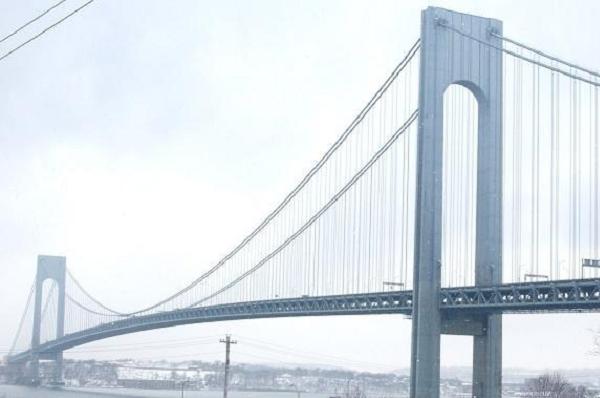
Photo by: 7mike 5000
The Verrazano Bridge to Staten Island, which according to the Census Bureau, grew more than three times as much as Brooklyn from 2000 to 2010.
If early numbers from the U.S. Census Bureau are correct, New York City grew more slowly over the past decade than 16 of the 20 largest cities in the United States. The Bronx grew twice as fast as Brooklyn. And the city somehow added 3,000 more housing units than people to live in them.
The Census Bureau says its decennial count has New York City at 8,175,333–about 167,000 more than in 2000, a change of about 2.1 percent. That growth rate lagged well behind Fort Worth (38.6 percent), Charlotte (35.2 percent) and Austin (20.4 percent). Among the top 20 cities, only Philadelphia (0.6 percent) and Dallas (0.8) grew more slowly than New York. Chicago and Detroit lost population, by 7 and 25 percent, respectively.
The city’s share of state population held steady at 42 percent while its slice of the national number slid from 2.8 percent to 2.6 percent.
But the Bloomberg administration says there’s ample reason to believe those numbers are wrong and, as it has done five times over the past eight years, the city will ask the Census to rethink its estimate, pressing for an increase of 225,000.
“A lot of the numbers that the census is about to release seems to go against some of the information we have. For example, the Census Bureau determined that the population of Queens increased by only 1,300 people. Think about that. 1,300 people over ten years,” the mayor said today. “I’m not criticizing them, but it doesn’t make any sense.”
The city was successful in getting Census figures corrected in 2003 (the count grew by 29,000), 2004 (64,000), 2005 (70,000), 2006 (36,000) and 2007 (36,000 again).
The population count is about more than bragging rights–after all, New York would still have a comfortable lead as America’s largest city even if Los Angeles cloned itself–because Census population figures affect how much federal aid the city gets.
That’s why the Bloomberg administration invested in a big PR push to try to increase participation in last year’s count. It was up against anti-Census advocates on the right who saw the survey as a government overreach and on the left who detected racism in certain questions.
To whatever extent the Census Bureau’s numbers are accurate, they hint at some fascinating trends. Staten Island was the fastest-growing borough, expanding by 5.6 percent. The Bronx grew by 3.9 percent and Manhattan by 3.2 percent. But super-hot Brooklyn allegedly grew a mere 1.6 percent and Queens barely budged (0.1 percent). The city’s white (-2.8 percent) and black (-5.1 percent) populations shrunk, while Hispanics (8.1 percent) increased and Asians (32 percent) soared.
In the boroughs, the racial and ethnic dynamics appear even more dramatic. According to the Census Bureau, the Bronx lost 22 percent of its white population. The number of Asians in Brooklyn jumped 41 percent. The count of Black residents shrunk 12.5 percent in Manhattan but grew 11.6 percent in Staten Island.
A map showing which neighborhoods lost or gained population suggests that Astoria lost more than 10,000 people and that a triangle of Brooklyn from South Crown Heights to Canarsie to Midwood shed residents as well.








